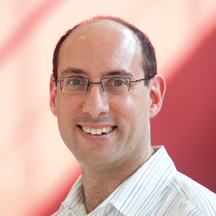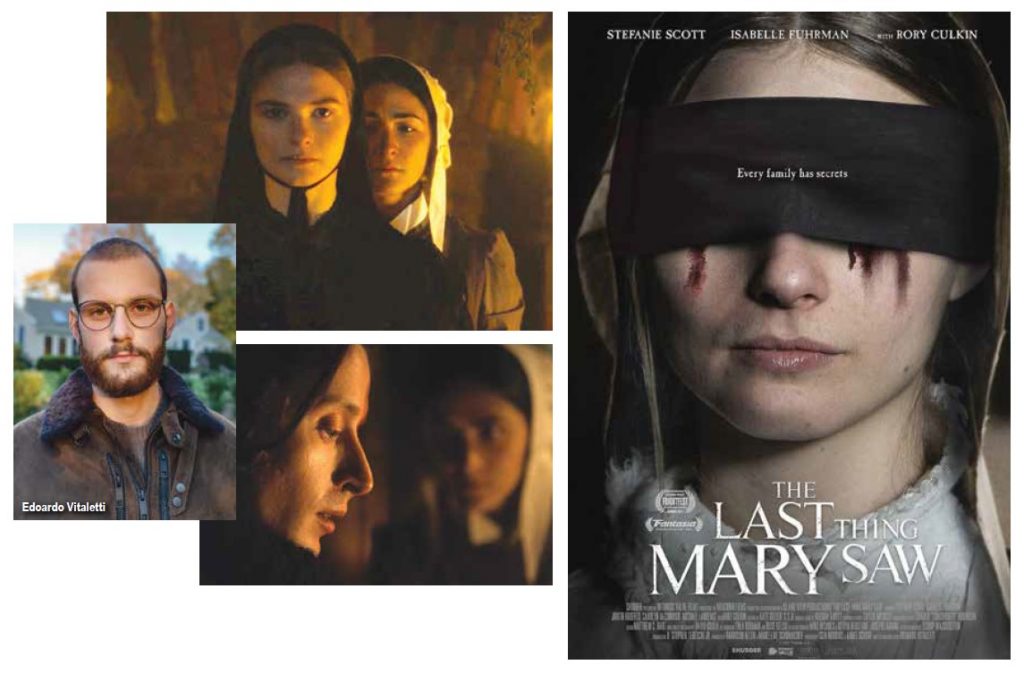
By Gary M. Kramer–
The Last Thing Mary Saw, available January 20 on Shudder, is a stylish, slow-burn thriller set in Southold, New York, in 1843. Mary (Stefanie Scott) has “sinful” affection for Eleanor (Isabelle Fuhrman), the family maid, and Mary’s parents want her behavior “corrected.” While Mary suggests they run away, Eleanor has a more devious plan—one that has deadly consequences.
The film, which is visually striking with candlelit scenes, builds its drama as power shifts between the characters, especially when an intruder (Rory Culkin) provides another obstacle for the lovers. Despite death, bloodletting, and supernatural elements, The Last Thing Mary Saw is not particularly gory or horrific. Its biggest scares are how religion is used to repress same-sex desire and punish these young women in love. Writer/director Edoardo Vitaletti spoke with me for the San Francisco Bay Times about his effective new film.
Gary M. Kramer: What was your inspiration for this story?
Edoardo Vitaletti: I was doing some personal research and study about 1800 Northern European art, and I noticed some interesting visual motifs and threads. Stark interior houses and funeral scenes. The Danish painter, Vilhelm Hammershøi, has a beautiful series of interiors with female subjects sparingly placed in them by a window or reading a book. I wondered about these beautiful, calmly constructed scenes. I felt they were saying a lot without saying anything, so the visual inspiration came from that.
In my personal life, I grew up in a very religious environment. I have a great and very open family. I’m from Italy, and we are pretty homogenous when it comes to religious preferences, and so it’s been a reckoning that there are priests talking about being inclusive—we welcome you, and love you if you are this or that, if you are straight, or fit a box they are comfortable with. There is a glaring and annoying contradiction with preaching that as a philosophy of inclusion with how exclusive it is. The antagonist forces of the movie came from wanting to expose that. The aesthetics were finding this beauty in the dark and family that are like people I met growing up in my life.
Gary M. Kramer: What can you say about researching and recreating the period detail?
Edoardo Vitaletti: I wanted to explore the effects of puritanism 200 yeas after the witch trials, which is why I set the film in the mid-1800s. When I tried to craft the period, I feared doing things that take viewers out of the period, so my focus was on finding a location from the period, keeping the costumes simple, and the accents—when people hear words differently, it takes them back. I worked with a great dialect coach to “dirty up” the dialogue and bring in an inflection. Some of the dialogue was from personal journaling, which is a great way to know how people speak. Writing gave women something to do when they were not allowed to do much else. Those things come together to give a sense of the period. The pacing, also. There is a formality to the body language and to the editing too.

Gary M. Kramer: How did you develop the film’s visual style? There are many scenes illuminated just by candlelight.
Edoardo Vitaletti: My cinematographer and I had a philosophy that was what you are seeing is as important as what you are not seeing. Making a period piece set in the mid-1800s, that comes in handy. Candles were the only available light source at that time, so it allowed us to work with darkness as much as light. The storytelling was informed by this idea of hearing a sound or feeling someone creeping in and opening a door ajar to listen, but you can’t see who is talking. Our approach was less is more. Less light means there is more mystery; less talking means there is more conversation happening. That presents difficulties. Characters have to say so much without saying anything. How do you frame a scene with the lighting to have one expression tell a story?
Gary M. Kramer: Yes, it engages the audience to figure out the characters’ thoughts and actions.
Edoardo Vitaletti: The idea was to start the story with the two protagonists; that their relationship mattered the most. I wanted to show that the family has a problem and that exposes their insecurity. All the silence and looks let the characters determine what happened before.
Gary M. Kramer: What decisions did you make about presenting the relationship between Mary and Eleanor, and how much of their affection to show?
Edoardo Vitaletti: Isabelle, Stefanie, and I agreed that this was their first relationship and first love; it was their first chance at being romantically involved with another person. So, their relationship is all the awkwardness and timidness of first love. I wanted to portray the innocence of first love. It doesn’t step into physical context quickly. We shot the kiss on the last day, so we saw that as the romantic buildup. We shot looks and closeness and that helped build that up. I didn’t want to move past that. It’s not only that the family considers their love as unnatural, it was also the [young women] not knowing what to do. My opinion is that queer relationships are portrayed as oversexualized in films and that creates an assumption that people make that there is a wildness to the representation of queer characters on screen or is obscene or perverse. This is a first love and the women decide the boundaries. What is this first kiss like? Their relationship is scandalous because other people’s insecurity is making it out to be so.
Gary M. Kramer: Why do you think this story is timely today?
Edoardo Vitaletti: How far past this have we moved? I know characters such as the ones who make up this unfriendly family do exist, and they do speak about non-straight relationships the way this family does. We live in a world where queer characters and relationships are relegated to a sphere of otherness even when it is not judged as something bad. It is put to the side—there is the normal and the other. We are not past this, and characters who do this should make people realize: How much I am actually welcoming everyone for who they are? I say this with a degree of sadness. I live in New York and you feel locked in a bubble of acceptance, but you realize it’s not true. It’s a big world, and there is a long way to go.
© 2022 Gary M. Kramer
Gary M. Kramer is the author of “Independent Queer Cinema: Reviews and Interviews,” and the co-editor of “Directory of World Cinema: Argentina.” Follow him on Twitter @garymkramer
Published on January 13, 2022
Recent Comments